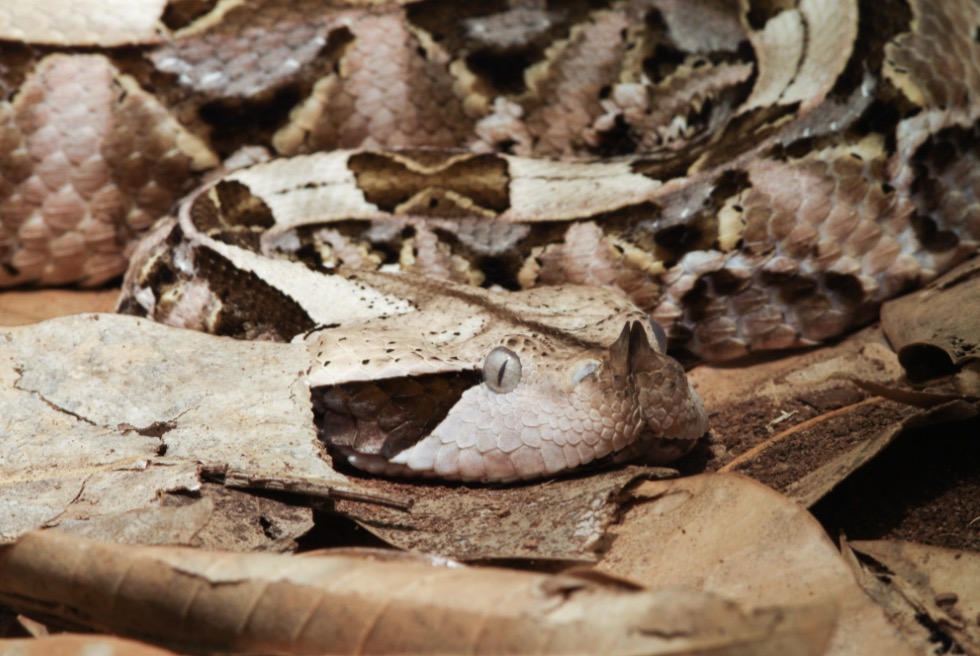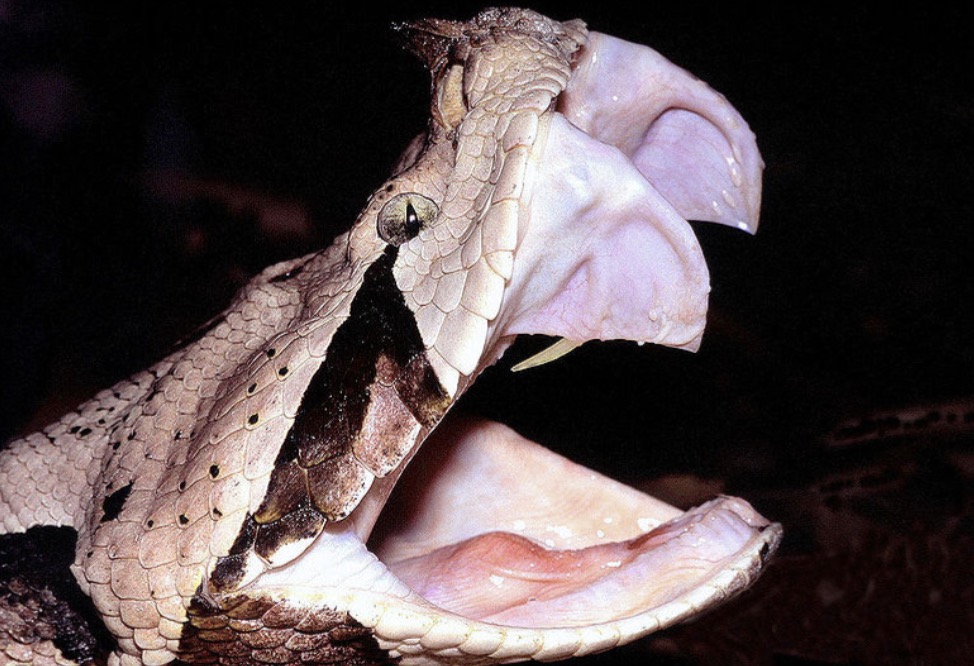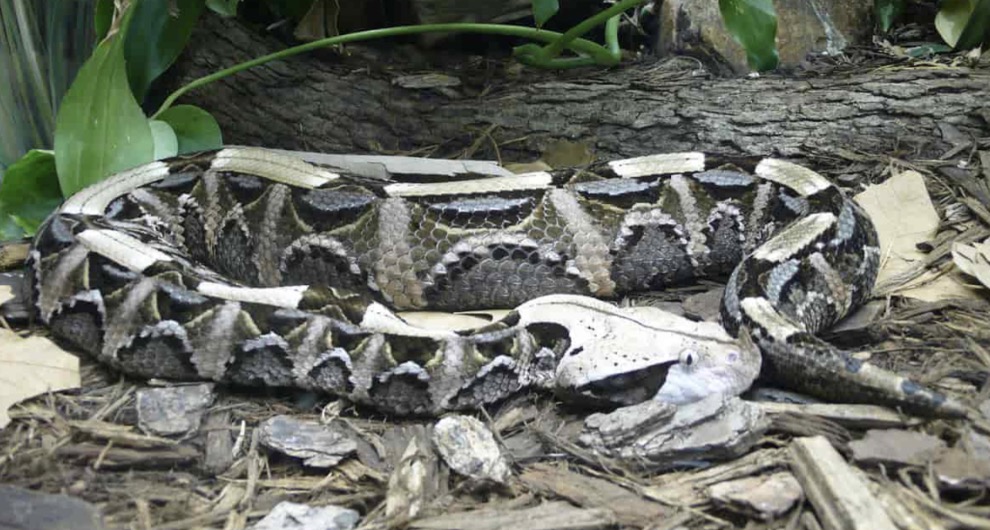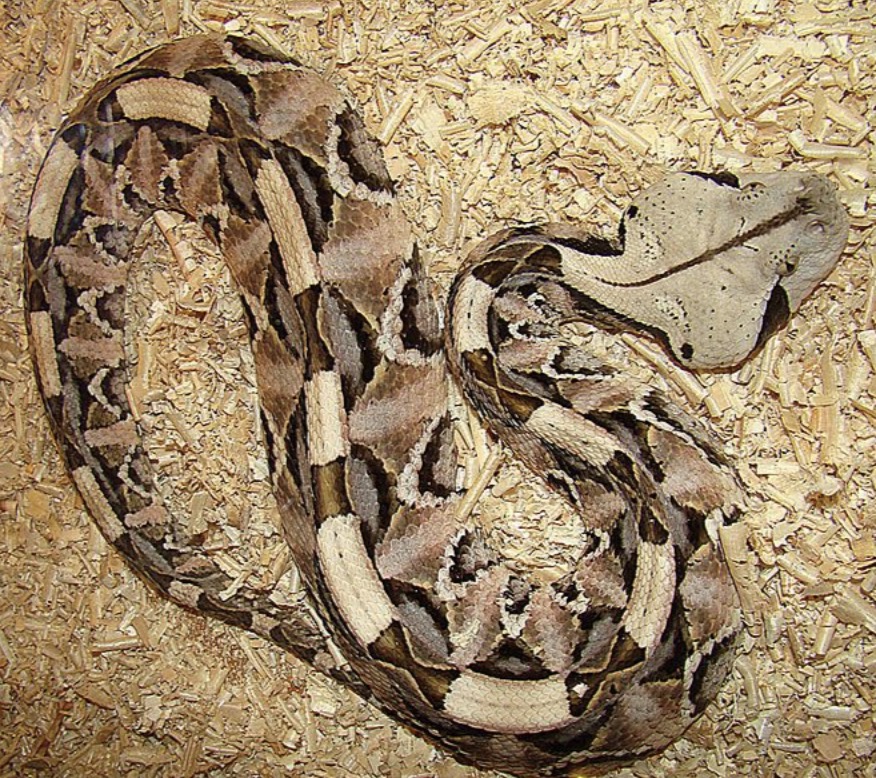
I’ve always had a little bit of a phobia of snakes, but I’m lucky to live where there aren’t many poisonous ones. Nevertheless, I find these species to be really fascinating, and whenever I periodically venture into the domain of the most hazardous reptiles, there is a mixture of both terror and curiosity.
The Gaboon Viper is a real wonder of nature that may be found deep within the African jungles. This alluring serpent combines cool camouflage, strong venom, and unmatched hunting abilities into a spellbinding whole.
Today, we dig into the fascinating world of this unusual creature to learn more about the mysteries underlying its peculiar characteristics and its reign as one of Africa’s most ferocious predators.
One of the biggest and deadliest vipers on the African continent is the Gaboon Viper, also known as the Gaboon Adder. This elusive serpent, which is native to the lush rainforests and arid savannas of Central and West Africa, is well known for its colorful and elaborate camouflage, which makes it a genuine master of disguise.
Only really massive King Cobras, which reach 6 feet in length and weigh more than 20 pounds, are heavier than the snakes.

What makes this snake’s fangs even more terrifying is that they can reach astonishing lengths of 2 inches, setting a record for being the longest among all poisonous serpents. The Gaboon Viper also has one of the strongest venom delivery systems among snakes.
Its venom, a strong concoction of enzymes and poisons, can cause serious tissue damage, intense pain, and, if ignored, may have fatal repercussions.
Although it has a huge, triangular head, the exquisite skin patterns of the serpent really capture the viewer’s attention. It is nearly hard to spot the snake before it strikes thanks to its remarkable camouflage, which allows it to blend in perfectly with the leaf litter on the forest floor.

The Gaboon Viper is an extremely patient species that spends extended periods immobile before the assault. It uses a careful and deliberate technique to ambush its prey. consuming grown-up rabbits, monkeys, and sporadically even the little royal antelope as food. This predator’s enormous appetite and capacity for large prey consumption are on display.
Fortunately, this species rarely bites people or comes into contact with them. Reports of assaults on humans continue to be rare because of this animal’s predilection for distant areas and typically non-aggressive demeanor. But when they do, such cases frequently arise from unintended contacts where people unintentionally walk on the snake.

If anti-venom is not provided, the outcomes in these sad circumstances may be lethal. The fact that this snake can hang onto its prey after biting it makes it possible to inject more poison into the bloodstream.
The Gaboon viper is only natively found in Africa, as was previously established. Even so, some Americans continue to keep them as pets in their homes.
The Gaboon viper draws snake aficionados who are eager to own one as a pet because it is the largest viper in the world and has a distinctive appearance. This decision can occasionally, though, lead to terrible outcomes, which is exactly what occurred in Virginia in 2022.

A man who kept the dangerous snake as a pet reportedly got bitten. After calling the police, the man was quickly taken to Richmond Hospital and checked into the emergency room in an effort to save his life.

The problem was made more difficult by the fact that the Smithsonian National Zoo had donated anti-venom, which the VCU Medical Center had used up. The Virginia Aquarium and Marine Science Center in Virginia Beach did, however, make a laudable effort by donating an additional 35 bottles of anti-venom to help with the treatment.
Given that there were allegations of a Gaboon Viper biting a man in North Carolina just a few months before the Virginia incident, it would seem that 2022 was a bad year for Gaboon owners. The man unfortunately lost three fingers while using 44 bottles of anti-venom.
Although there have been tales of Gaboon Vipers escaping into the wild, fortunately it is exceedingly unlikely that you will come across one in the United States. The Georgia Department of Natural Resources claimed that the venomous snake may have been spotted in Milledgeville, Georgia, in 2015.
A video posted by The Reptile Report in 2021 quickly gained popularity on social media. People were fascinated by the Gaboon Viper’s amazing ability to blend into its surroundings when it was shown as being seen on the street. Additionally, it somewhat resembled a caterpillar when it moved!
It’s understandable why the video attracted a lot of attention given what a remarkable creature this is:
The Gaboon Viper is a living example of the marvels of nature, demonstrating its extraordinary capacity for adaptation, survival, and success in the African rainforests.
The more we discover about its enigmatic existence, the more we come to appreciate the delicate harmony between strength and beauty that characterizes the natural world. Please share this post if you agree!




Leave a Reply